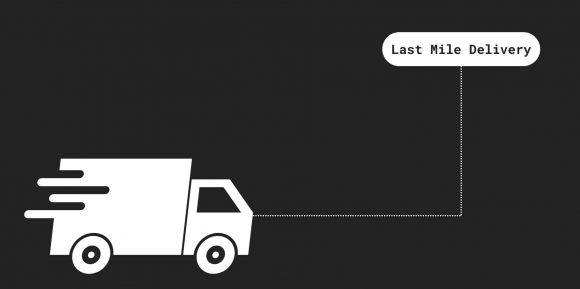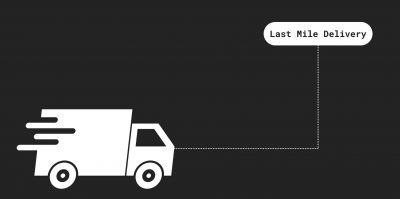Uber delivery has set an example of what the last-mile delivery process should look like. No wonder startups aim to be called “the Uber of” their field.
From ETA features, driver ratings, and robot delivery to return logistics, Uber has set the bar high for last mile delivery, which many aim to duplicate.
The history of Uber Technologies
Uber started in 2008 on a cold winter evening in Paris when Travis Kalanick and Garrett Camp identified a problem. They couldn’t find a ride, so Uber was born. A year later, the app was created.
Early days of Uber
Uber started off in 2010 with its first customer using the e-hailing app to commute in San Francisco. The following year, it expanded internationally.
Uber continued with creative ideas to bring services to customers in a fast and convenient way while experimenting with different concepts of last mile delivery.
How Uber set the bar: A timeline
Uber continuously comes up with creative ways to solve problems like depression and cost of living pressure.
Uber KITTENS
UberKITTENS, an initiative launched in 2013, allowed lonely and depressed customers to request a 15-minute snuggle time with a furry friend.
Uber Spring Clean
Then there was Uber Spring Cleaning, an on-demand donation pickups to donate clothes to Goodwill.
Uber Pool
UberPool launched in San Francisco in 2014, helping riders heading in the same direction to share costs.
Uber Eats
Its successful subdivision, Uber Eats, launched in 2015. It made its debut in Chicago, LA, and New York City.
In 2023, it offered customers the option to order from two stores simultaneously. This solved a problem many households faced when not everyone felt like ordering at the same restaurant.
Uber Autonomous
In 2016, Uber Technologies started a pilot program testing self-driving cars in Pittsburgh. In just a year, autonomous vehicles broke the record for driving an average of 80,000 miles per week.
Uber Freight
Identifying a gap in the logistics chain, Uber Freight launched in 2017. It connects trucking companies and drivers with suppliers. This booking service helps carriers to improve their logistics process.
Uber Connect
The service Uber Connect, gives businesses access to home deliveries and allows for reverse logistics.
If a customer is unhappy with the product, an Uber driver can be summoned to collect and return a parcel to the business.
Uber Technologies Different Departments
Delivery, mobility, and freight form Uber Technologies’ foundation. But how do the trio—Uber Eats, Uber e-hailing, and Uber Freight—work as individual service delivery mechanisms in the larger machine of Uber Technologies? Let’s take a look:
Delivery
Uber Eats has perfected the last mile delivery in the restaurant industry. It’s fast, provides real-time live tracking to customers, and provides access to a pool of delivery drivers.
It’s also now taken on the robotics world, with food delivery in Japan.
Robot deliveries
Uber Eats Japan now uses self-driving robots for deliveries in Tokyo. Market and Markets research shows that last mile delivery with robots is expected to balloon by 33.7% in the next few years. Not only will it take quicker to receive deliveries, but also cost less.
Drone deliveries
Uber has long been experimenting with drone deliveries but has yet to implement any. It’s still in the testing phase.
Mobility
Uber Connect is one of its main services, allowing customers to send items to colleagues, friends, or family.
There is also a Return a Package feature, which orders a courier to pick up your prepaid and sealed packages and drop them off at a local post office. The service includes a live tracking order.
Freight
Uber Freight extended its footprint in Europe in 2019. It helps truckers connect with shipping companies.
Given that its parent company, Uber Technologies, is booming, Uber Freight is a leader in the industry.
Uber hopes to expand its footprint and grow “tenfold” in Europe. The European logistics market is expected to reach 1.17 trillion EUR by 2029, and Uber says it’s expected to grow in size and complexity.
Last mile deliveries innovation
While the last mile delivery sector remains immensely complex, there are technologies to help bridge the gap.
Autonomous delivery, smart lockers, and drone delivery services are all the latest technologies trying to bridge certain challenges experienced in the industry.
Autonomous delivery services
Many companies, like Uber, have made significant investments in autonomous deliveries. Uber Freight has been providing this service since 2021 and has logged hundreds of thousands of commercial autonomous miles.
Smart lockers
Businesses are using smart lockers for last mile delivery instead of delivering straight to customers’ doors. Attempted delivery is one of customers’ main frustrations.
Smart lockers are now being installed in strategic places around the city. When customers can pick up orders at a smart locker close to work, it solves a massive problem with too many vehicles on the road in cities.
Drone delivery
Drone deliveries play a massive role in the last mile sector, with high customer expectations for faster same day delivery. They’re cost-effective, flexible, and efficient.
There is a lot of buzz around the drone delivery process, and many companies, including Uber, are now experimenting with delivery method.
In some instances, companies also use it for retail deliveries. It’s an attractive option for short-distance deliveries. It minimizes the need for more vehicles on the road and delivery drivers.
Last Mile Delivery Logistics Challenges
Last mile logistics is the final destination that a parcel has to reach. The shipping process has been completed, but the last mile is the most important delivery process.
It deals directly with customers, which swings a bad review into a good one if the last mile is handled correctly.
Every company wants to ensure a satisfactory last-mile delivery experience. However, perfecting the customer experience is complex.
The most common last mile problem is that it’s extremely expensive. It’s also unpredictable, and delivery failure is common.
Last Mile Problem 1: Expensive
This is a common last mile problem. It’s easier to send a large truck from the transportation hub to one location, a store.
To deliver small packages, crisscrossing through traffic congestion to beat the delivery time of another service provider costs money.
Last Mile Problem 2: Unpredictable
Too many moving parts can disrupt the last leg of the journey. Delivery times often don’t match the customer’s expectations. Consider the weather, traffic, or driver fatigue. The more delivery orders a driver receives, the harder it gets to stick to the expected time.
Last Mile Problem 3: Failed Delivery
Often, drivers arrive at a final destination, but there is no one to deliver the parcel to. Sometimes an incomplete address is also assigned to the parcel.
This impacts a significant number of ecommerce sales. It’s time consuming to reroute the parcel back to the warehouse.
The Solution: Route optimization
Customers want speed, accuracy, and efficiency when it comes to last mile delivery. Estimated Time of Arrival (ETA) takes the guessing out of last mile delivery. Many businesses use their infrastructure or existing software, like Uber, to assist with this process.
With the right fleet management software, these route optimization features can help businesses deliver faster services during the last mile.
Estimated Time of Arrival (ETA)
Estimated Time of Arrival helps customers to plan their day instead of waiting for the parcel to arrive at their front door. Last mile delivery is made easy with ETA, allowing a customer to plan their day and avoid a missed delivery.
With the right software, a live link is sent to the customer, who can follow the driver as he/she finishes the last mile of the delivery journey.
Allowing customers to know exactly when a parcel or delivery will arrive builds customer satisfaction and improves the online shopping experience.
Route Planning like Locate2u
Route planning is complicated, and many companies fail dismally when it comes to the number of delivered drives they have to deal with during peak hours or peak seasons.
With the right software, route planning can be used to build the most efficient routes despite the weather and traffic. This way it allows a driver to reduce travel time and fuel consumption.
About the author
Mia is a multi-award-winning journalist. She has more than 14 years of experience in mainstream media. She's covered many historic moments that happened in Africa and internationally. She has a strong focus on human interest stories, to bring her readers and viewers closer to the topics at hand.











